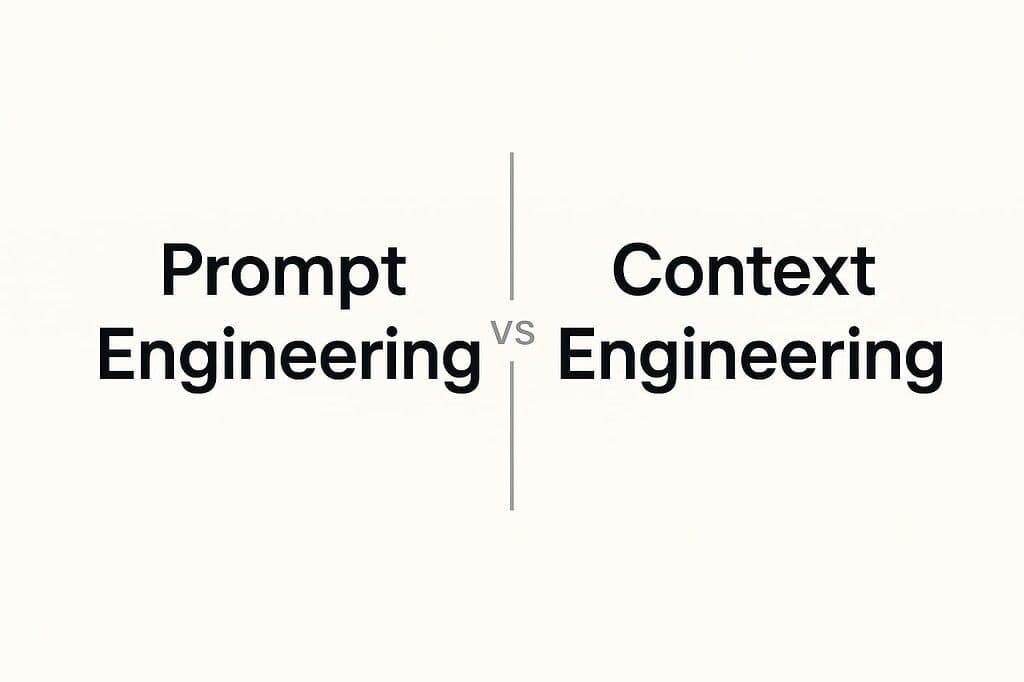Context + Prompts: The AI Advantage
Oct 21, 2025 | 3 min read

You know that moment when you’re chatting with a “smart” bot and it completely misses your point? I’ve been there too—repeating myself, clarifying context, only to get a generic reply. That frustration is exactly why I’ve built my latest AI agents around two simple ideas: context and prompts.
Why Single-Shot AI Feels… Flat
Imagine meeting someone who forgets everything you said five seconds earlier. That’s how most AI feels today:
- Every question is a brand-new conversation
- Responses ignore your history and preferences
- Complex problems get one-off treatment, so they often fall short
It works for quick facts, but for anything deeper—multi-turn chats, personalized help, step-by-step reasoning—you end up feeling more like a test subject than a valued user.
Building a Human-Centered Memory
Here’s how we bring empathy and continuity back into AI:
Short-Term Buffer
Like keeping notes in your head, this captures the last few interactions so the agent truly “hears” you in real time.
Long-Term Store
Think of an AI diary—it remembers your past chats, your likes, even how you like explanations.
Knowledge Graph Interface
Behind the scenes, structured data connects facts so the agent isn’t just recalling text, it’s understanding relationships.
With these layers, our agents feel more like colleagues who remember your projects and preferences over days and weeks—no more endless reintroductions.
Crafting Prompts That Care
Prompt engineering isn’t just about crafting clever templates; it’s about guiding AI to think aloud and check itself:
- Layered Prompts break tasks into bite-sized steps, so the model doesn’t skip ahead.
- Chain-of-Thought Scaffolding encourages the AI to explain its reasoning—kind of like asking someone to show their work.
- Self-Validation Loops catch mistakes on the fly, preventing wild missteps before they reach you.
This approach has slashed hallucinations in half and boosted accuracy to 85% on complex workflows.
How to Enrich Context in Your API Calls
If you’re building on top of an AI API, you won’t get automatic memory or hidden cues. Here’s a simple recipe to bring context richness into your implementation:
Capture Every Exchange
Store recent user messages and AI replies. When sending a new request, prepend the last few turns—just enough to remind the model what’s happening.
Inject System Notes
Add a brief “system” message at the start of each call. Define tone, role, or task constraints (“You are a friendly tutor…”). These invisible cues guide responses.
Adjust Parameters Dynamically
Monitor conversation length and complexity. If a discussion grows deep, nudge up the temperature or max tokens. For quick factual queries, tighten limits for speed and precision.
Post-Process and Feed Back
After you get the reply, run simple checks: grammar, relevance to the question, or domain-specific validations. If something’s off, tweak your next system note or prompt template.
Archive Key Insights
Pull important facts or user preferences from each interaction and store them in your long-term database. Use semantic search to retrieve these nuggets when they matter.
By following this “how-to” pattern, your API-driven agent will feel less like a series of isolated calls and more like an evolving conversation partner.
Real Results, Real People
When students use the AI tutor on lab.computer, they see help that picks up where they left off—adapting hints based on their history. Job seekers on tiqi.co.uk get match suggestions that feel tailored, not templated. The feedback? “It’s like talking to someone who actually gets me.”
Simple Architecture, Big Impact
I promise, you don’t need rocket science to do this. Our stack looks like:
Context Layer handles memory with lightning-fast retrieval
Prompt Layer customizes questions and reasoning flows
Orchestrator ties it all together in under a second
Why This Matters to You
If you’re building any AI feature—chatbots, tutors, virtual agents—ask yourself: are you giving users a one-off Q&A, or are you crafting a relationship? Context-rich, prompt-rich agents turn transactions into conversations, and features into experiences people actually love.
Let’s make AI feel more… human.